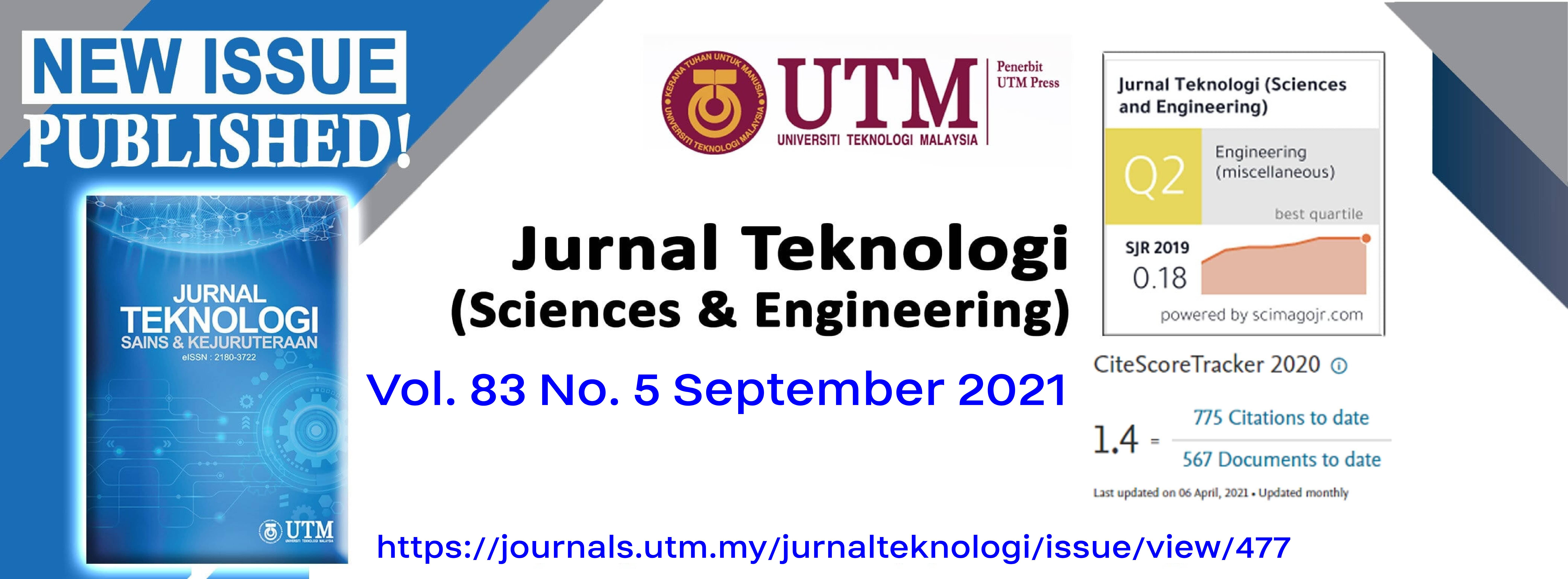PENCIRIAN TEMPORAL SKALA KECIL AIR SISA DOMESTIK PERBANDARAN
SMALL SCALE TEMPORAL CHARACTERISATION OF URBAN DOMESTIC WASTEWATER
DOI:
https://doi.org/10.11113/jurnalteknologi.v83.16625Keywords:
Sewage Treatment Plant, Influent, Characterisation, Urban, Domestic WastewaterAbstract
Sewage treatment plants (STP) in Malaysia are designed to treat a load of contaminants according to the level of concentration for chemical oxygen demand (COD) and nitrogen ammonia (NH3-N) of 250 mg/L and 30 mg/L, respectively. However, studies show that the organic load of Malaysian wastewater is low and even temporarily fluctuates resulting in the low effectiveness of treatment especially in ammonia removal and consequently cause effluents that do not undergo proper treatment to be released into the environment. Therefore, this study aims to identify concentrations of COD and NH3-N in the influent of urban domestic wastewater along with other physico-chemical characteristics. Two locations of the STP were chosen based on the urban area with different catchment sizes for a population equivalent (PE) 60,000 for the first STP (LRK#1), and 150,000 for the second STP (LRK#2). These parameters include pH, temperature, conductivity, turbidity, total suspended solids (TSS), nitrogen nitrate (NO3-N), total Kjeldahl nitrogen (TKN) as well as heavy metals such as Cadmium (Cd), Chromium (Cr), Copper (Cu), Nickel (Ni), Lead (Pb), and Zinc (Zn). The sampling and analysis methods used the guidelines recommended in the American Public Health Association (APHA). The results give the highest average COD concentrations for the LRK#1 and LRK#2 are 180.5 mg/L and 380.9 mg/L, respectively. The highest NH3-N concentrations were 33.53 mg/L for LRK#1 and 31.63 mg/L for LRK#2. Overall, the wastewater physico-chemical characteristics of both treatment plants show wastewater in the medium and low concentration categories.
Downloads
Published
Issue
Section
License
Copyright of articles that appear in Jurnal Teknologi belongs exclusively to Penerbit Universiti Teknologi Malaysia (Penerbit UTM Press). This copyright covers the rights to reproduce the article, including reprints, electronic reproductions, or any other reproductions of similar nature.
















